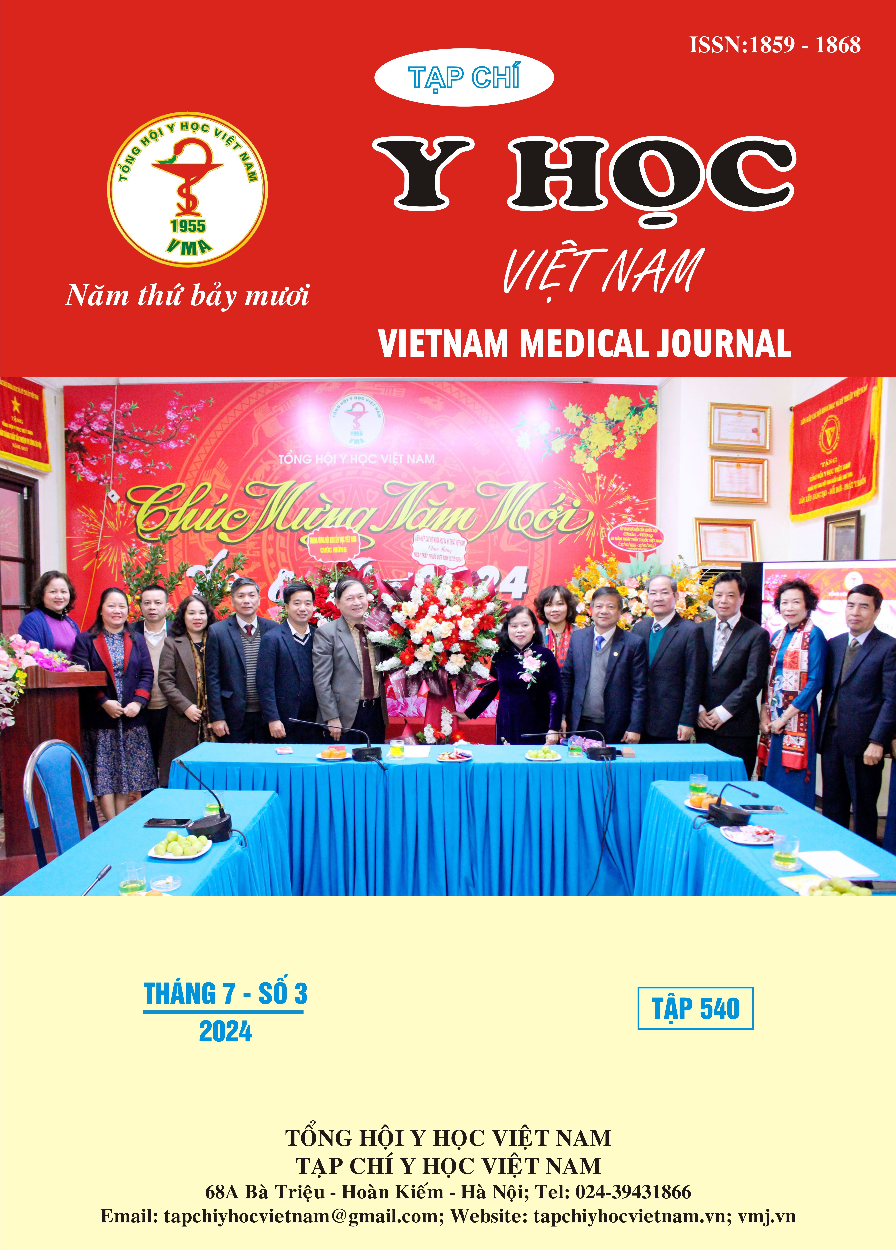RESULTS OF TREATMENT OF TIBIA BODY FRACTURES WITH SIGN NAILS WITHOUT OPENING THE FRACTURE USING C-ARM AT THANH HOA PROVINCE GENERAL HOSPITAL
Main Article Content
Abstract
Objective: The study aimed to evaluate the treatment results of 40 patients with isolated closed tibial shaft fractures (or associated fibula fractures) undergoing tibial fusion surgery using SIGN nails without opening the fracture (assisted by C-Arm) at Thanh Hoa Provincial General Hospital. Research design: Cross-sectional descriptive study. Selection criteria: Patients over 18 years old, with a simple closed tibial shaft fracture (or with a fibula fracture) due to trauma, without severe deformity in the knee or ankle joints (knee flexion over 900), with enough information according to the form Researched medical records, postoperative follow-up period > 6 months. Research results: Through a study of 40 cases of tibial shaft fractures undergoing closed fusion surgery with SIGN nails at Thanh Hoa Provincial Hospital between January 2020 and April 2024, it was found that men accounted for the majority (62 ,50%); Most common age: 18 - 40 (65%) and traffic accident is the main cause (62.50%); The most common fracture location is the middle third (55%); Lesions according to AO classification: type A is the highest (80%), of which A3 accounts for 47.50%; type B accounts for 20%; There are no type C lesions. Results: +/ Soon results: all cases had immediate healing, no post-operative complications; Results of fracture reduction according to the standards of Larson and Bostman: very good accounts for 90%, good accounts for 10%, there are no average or poor cases. +/ Late results: Bone healing results according to the standards of JL Haas and JY De La Cafinière: very good 92.5%, good bone healing 7.5%. Normal knee movement accounts for 97.5%, flexion restriction < 200 accounts for 2.5%. Scoliosis of limbs 5 – 100 accounts for 5%. The functional recovery results were very good in 92.5% and good in 7.5%, with no average or poor cases. Conclusion: Bone fusion surgery method using SIGN nail without opening the fracture, assisted by C-Arm is an effective and safe treatment method for tibial shaft fractures in adults. Can be applied at provincial hospital facilities.
Article Details
Keywords
Tibia fracture, SIGN nail.
References
2. Lisa Tamburini, Francine zeng, Dillon Neumann, Casey Jackson, Michael Mancini, Andrew Block, Seema Patel, Lan Wellington and David Stroh. A Review of Tibial Shaft Fracture Fixation Methods, Trauma Care, 2023
3. Mosheiff. R and Leung. F, "Intramedullary Nailing A Comprehensive Guide," in Tibia, Diaphysis, 2015, pp. 347 - 374.
4. Lê Xuân Hồng, Đánh giá kết quả điều trị gãy thân hai xương cẳng chân bằng đinh Sign không mở ổ gãy tại bệnh viện Việt Đức, Luận văn chuyên khoa II - Đại học Y Hà Nội, 2012.
5. Phạm Đăng Ninh, Nguyễn Bá Ngọc và Hoàng Thế Hùng, “Đánh giá kết quả điều trị gãy hở thân xương chày bằng đinh SIGN tại bệnh viện Quân y 103,” Tạp chí Chấn thương chỉnh hình Việt Nam, tập Số đặc biệt, pp. 216-220, 2016
6. Lê Minh Hoan, Đánh giá kết quả điều trị gãy thân xương chày bằng đinh Sign không mở ổ gãy, Luận văn Thạc sỹ - Đại học Y khoa Huế, 2006.
7. Trương Văn Linh, Đỗ Phước Hùng và Phạm Quang Vinh, “Điều trị phẫu thuật gãy thân xương chày bằng đinh nội tủy có chốt với khung định vị phía trước cải biên,” Y học TP. Hồ Chí Minh, tập 23, số 2, pp. 196-200, 2019.
8. Khan. L, Javed. S, Khan. G and Aziz. A, "Outcome of Intramedullary Interlocking SIGN Nail in Tibial Diaphyseal Fracture," Journal of the College of Physicians and Surgeons - Pakistan, vol. 3, no. 23, pp. 203 - 207, 2013


